From Helicopters To Halogen Lamps: Top 8 Weird Things Used To Dry Cricket Pitches - In Pics
In the dynamic world of international cricket, where the game's fate can be profoundly influenced by weather conditions, ground staff and officials have harnessed inventive methods and tools to combat wet pitches and outfields due to rain. Among these remarkable solutions, the Cricket Hover Cover stands out as a cutting-edge technology, enabling swift and efficient pitch protection during inclement weather. In this exploration of innovative techniques, we delve into five unique approaches used in international cricket to tackle wet playing surfaces and keep the game alive.
1. Air Blowers:
)
Notable Instance: During the 2017/18 Ashes series, water spilled over the pitch ahead of the final day's play in Perth. Ground staff used air blowers to dry the pitch, ensuring that the Test match continued. Australia eventually claimed an innings win.
2. Helicopters:
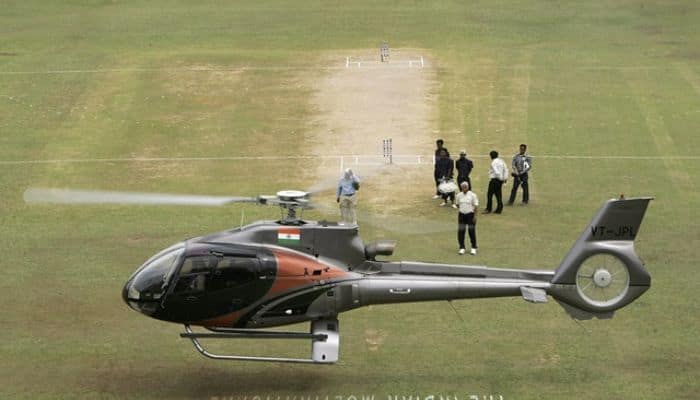
Memorable Use: In a rare case, helicopters were deployed during the 2003 World Cup match between Australia and Netherlands to dry the outfield. Despite rain delays, the match resumed, with Australia winning by 75 runs via the DL method.
3. Pitchfork:
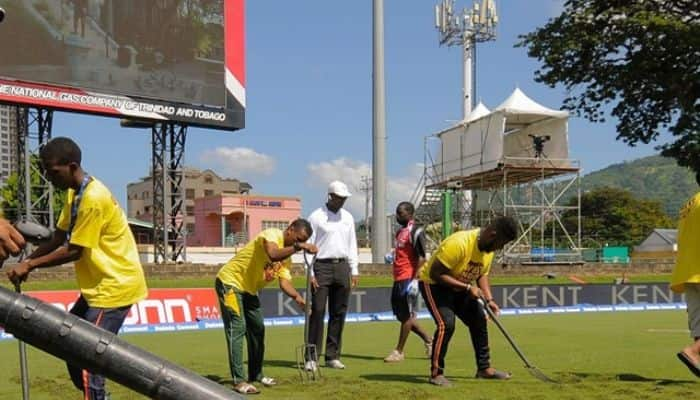
Unique Application: During the 2016 Test match between India and West Indies at Queen's Park Oval in Port of Spain, ground staff used pitchforks to create holes in the wet outfield. This allowed air and sun exposure to dry troublesome areas, although play remained limited.
4. Pedestal Fans:

Noteworthy Occurrence: In preparation for a 2017 T20I between India and Australia at Hyderabad's Rajiv Gandhi International Cricket Stadium, staff placed pedestal fans around the wet outfield. Heavy rains prior to the match left the field damp, resulting in a delayed start and eventual abandonment.
5. Fire
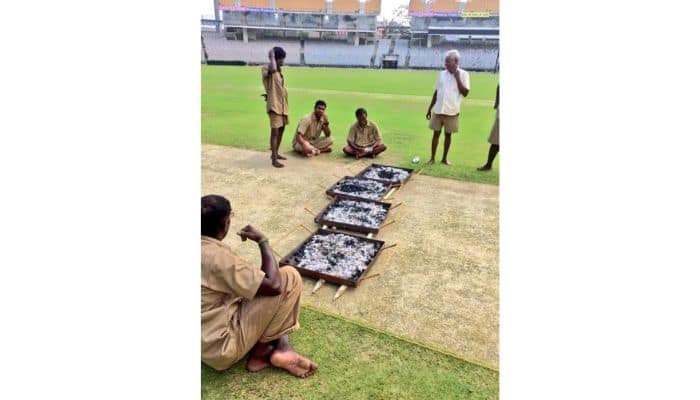
Unconventional Approach: Kochi's Nehru Stadium witnessed an unusual sight during the 2007 ODI series between India and Australia. Groundsmen used fire with flammable materials near the bowler's run-up to quickly dry the outfield. The match commenced with minimal delay, with Australia winning the game.
6. Sponge
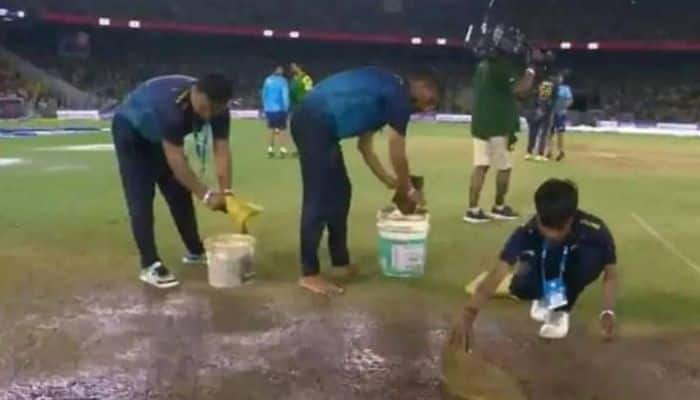
Ground staff have sometimes employed sponges to soak up excess moisture on the pitch or outfield, aiding in faster drying.
7. Hair Dryer

Unconventional Tool: Ground staff in Guwahati once used a hair dryer to tackle wet patches on the pitch. While rare, this creative solution underscores the determination to get the game going despite challenging conditions.
8. Halogen Lamps
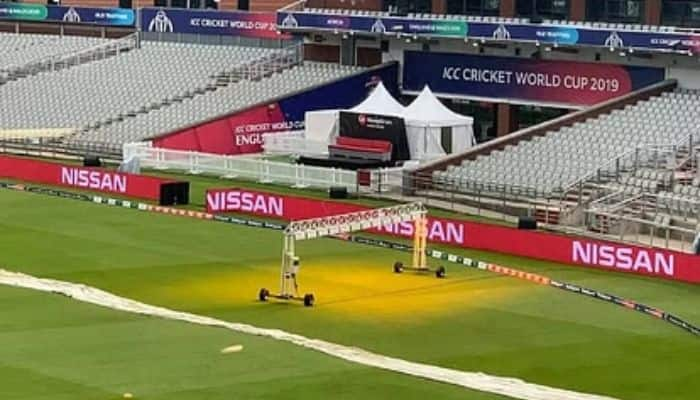
Halogen lamps emit heat and have been used to speed up the drying process by focusing warmth on specific areas.
9. Irons
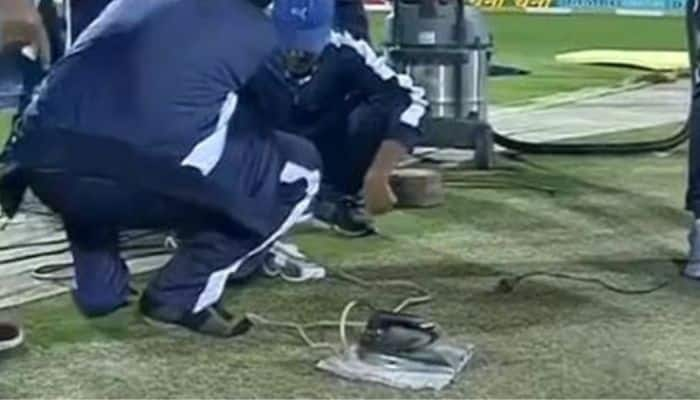
Yes, irons have found their way onto cricket fields. They've been used to press and dry wet patches on the pitch or outfield, especially during localized rain.
10. Hover Cover
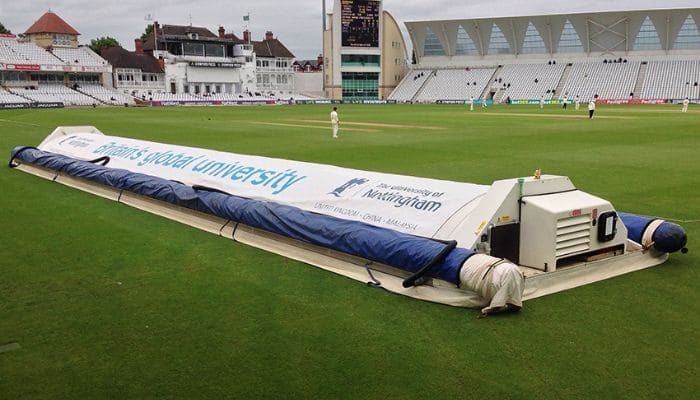
Cutting-Edge Technology: The Cricket Hover Cover, a state-of-the-art innovation, uses a hovercraft-like design to quickly and efficiently cover the pitch during rain. Its hovering capability prevents damage to the pitch while ensuring rapid deployment and removal, allowing play to resume sooner after rain interruptions.
Trending Photos









